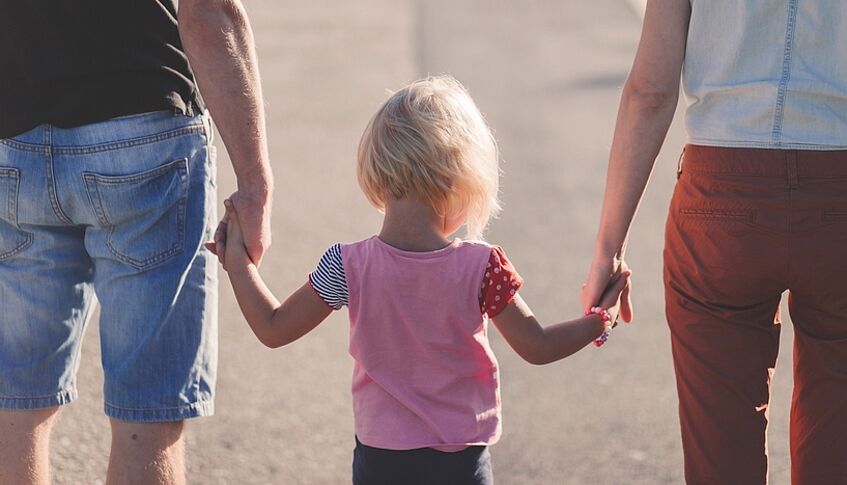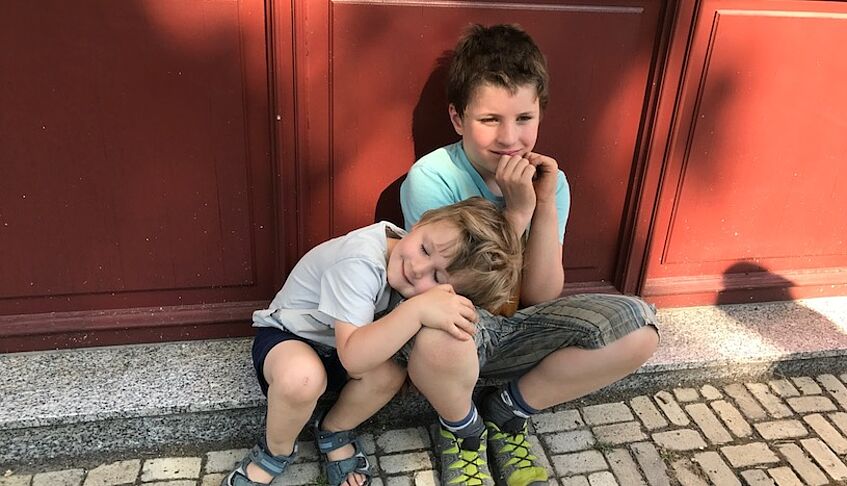Why is social development so important?

Newborn babies are highly dependent on their caregivers and the people in their environment. They need protection, nutrition and comfort. So it is not surprising that babies look for guidance from adults from birth onward. Developmental psychological research has shown that already hours after birth, babies look longer at human faces compared to objects. They can even distinguish their mother’s face from the faces of other women and have a preference for looking at their mother.
A few weeks after birth, the caregiving of trusted and familiar people is rewarded by babies: social smiling begins. The smile no longer simply signals „I’m fine“ but also „I’m glad you’re here“. A wonderful moment for parents.

We are particularly interested in how infants and children perceive other people and learn from them. „Social learning“ enables children to acquire languages, learn about opportunities and risks in the environment, about the functions of objects and much more. So in the first years of life, babies turn from newcomers with still limited visual acuity and little motoric abilities into alert young explorers who manage remarkably well to find their ways in the world!
We want to contribute to a better understanding of this fascinating development. The more we know about healthy development, the sooner we can find ways, to help children with difficulties inform parents and educators about developmental processes and create optimal learning environments for children!
- Find out how you can support us here!
The importance of social development
References
Bushnell, I. W. R., Sai, F., & Mullin, J. T. (1989). Neonatal recognition of the mother’s face. British Journal of Developmental Psychology, 7, 3-15. [DOI]
Hoehl, S. & Bertenthal, B. I. (2021). An Interactionist Perspective on the Development of Coordinated Social Attention. In J. J. Lockman (Ed.), Advances in Child Development and Behavior, (Vol. 61, pp. 1-41). Amsterdam: Elsevier. [DOI]
Johnson, M. H., Dziurawiec, S., Ellis, H., & Morton, J. (1991). Newborns' preferential tracking of face-like stimuli and its subsequent decline. Cognition, 40 (1-2), 1-19. [DOI]
Kliesch, C., Parise, E., Reid, V. M., Hoehl, S. (2021). The role of social signals in segmenting observed actions in eighteen-month-old children. Developmental Science, e13198. [DOI]
Michel, C., Pauen, S., & Hoehl, S. (2022). When it pays off to take a look: Infants learn to follow an object’s motion with their gaze – especially if it features eyes. Infancy, 00, 1– 0. [DOI]
Pauen, S., Traeuble, B., Hoehl, S., & Bechtel, S. (2015). Show me the world. Object categorization and socially-guided object learning in infancy. Child Development Perspectives, 9, 111-116. [DOI]
Striano, T., & Reid, V. M. (2006). Social cognition in the first year. Trends in Cognitive Sciences, 10 (10), 471-476. [DOI]
